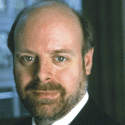 Change is constant.
Change is constant.
By Dirk Olin
I’ve written before in these pages on the subject of change. It’s all around us these days—social revolution in the “Arab Street,” rhetorical moderation from the White House, lyrical transformation via Christina Aguilera at the Super Bowl. Historically, the paradox has furrowed the brows of philosophers since the dawn of civilization: Change is constant. .
The concept is value-neutral. Change can be good or bad, peaceful or violent, progressive or regressive. It is also often relative. Change in Cairo means one thing for an unemployed engineer and another thing for a member of the autocracy. Shifts in Oval Office oratory might be mostly symbolic (junking the Environmental Protection Agency regulation that categorized saccharin as a toxic substance) or substantive (tightening workplace liability rules under the Occupational Safety and Health Administration.) Alterations to stanzas in the National Anthem before an audience of 100 million viewers—okay, that’s just pathetic.
But in the context of human resources services, change is no abstraction. And when the service in question is being provided by an external vendor, change has to be more than a marketing pitch. It’s become the currency of the realm.
That’s why during the 2010 HRO Today World Summit in Amsterdam I was so taken with the presentation by Anthony Hesketh. An associate professor at England’s Lancaster University Management School, Hesketh is also founding director of the school’s Centre for Performance-Led HR, where he convenes thought leaders from among the globe’s leading organizations. At the Summit, the professor’s argument was essentially that the HR outsourcing industry is flirting with crisis.
As engagements have matured along with the industry, the value proposition has morphed from one of efficiency to one of transformation. Outsourcers have increasingly offered their buyers nothing less than professional redefinition. The notion was that they would take all that unglamorous stuff off of the desks of practitioners, who could then escape their collective chrysalis and realize their inner butterfly. You know—transcend transaction and seize the proverbial seat at the table.
But when it comes to its promises of transformation, providers are vulnerable to charges that they are all hat and no cattle. (Being a Brit, the professor might prefer “all wax and no wick.”)
Change? What change? Big change? No, spare change. Or, at least, that was the point of departure for Hesketh’s lecture, which he has since recast for our pages under this month’s cover story, “Transformation on Trial.” Hesketh contends that the time has come for providers to marshal their evidence. To reach your own verdict, please click here.
Now as long as we’re on the topic of change, astute readers might have noticed that they’re holding an example of just that idea right in their hands. Our magazine has a new look, compliments of our new designer, Carina Tam. A graduate of the Graphic Design program from the Fashion Institute of Technology in New York City, Carina has plied her trade from the pages of the New York Post to the management of small printshops to a branding agency in Hong Kong, where her husband (then fiancé) resided. There, she eventually moved onto art directing for the region’s first English arts and culture magazine, which had been founded by the former general manager of Newsweek Asia.
As Carina has brought me each new page during the past month, I have become increasingly excited by her vision. So much so, that I asked her one day to articulate the aesthetic, something I’ve rarely requested of designers I’ve worked with (pictures being worth a thousand words and all that). “As I unravel each page of the magazine,” she said, “I can see the history that has been built upon it. But like many experiences in life, a change can lead to an outstanding revolution. The approach here is to bring the magazine back to a cleaner and simpler palette, to air out and breathe, as if it were to be reborn.”
As a technical matter, Carina achieved that vision using new fonts—Frutiger 55 roman, 77 black condensed, and Helvetica Neue Light. But that doesn’t explain the new look and feel of HRO Today. That came from her imagination. A good thing too—because change requires leaving something behind, and you want to get to a better place, not just switch for its own sake. Or, as Churchill put it: “There is nothing wrong, with change, as long as it is in the right direction.”
Dirk Olin is Editorial Director of HRO Today.










